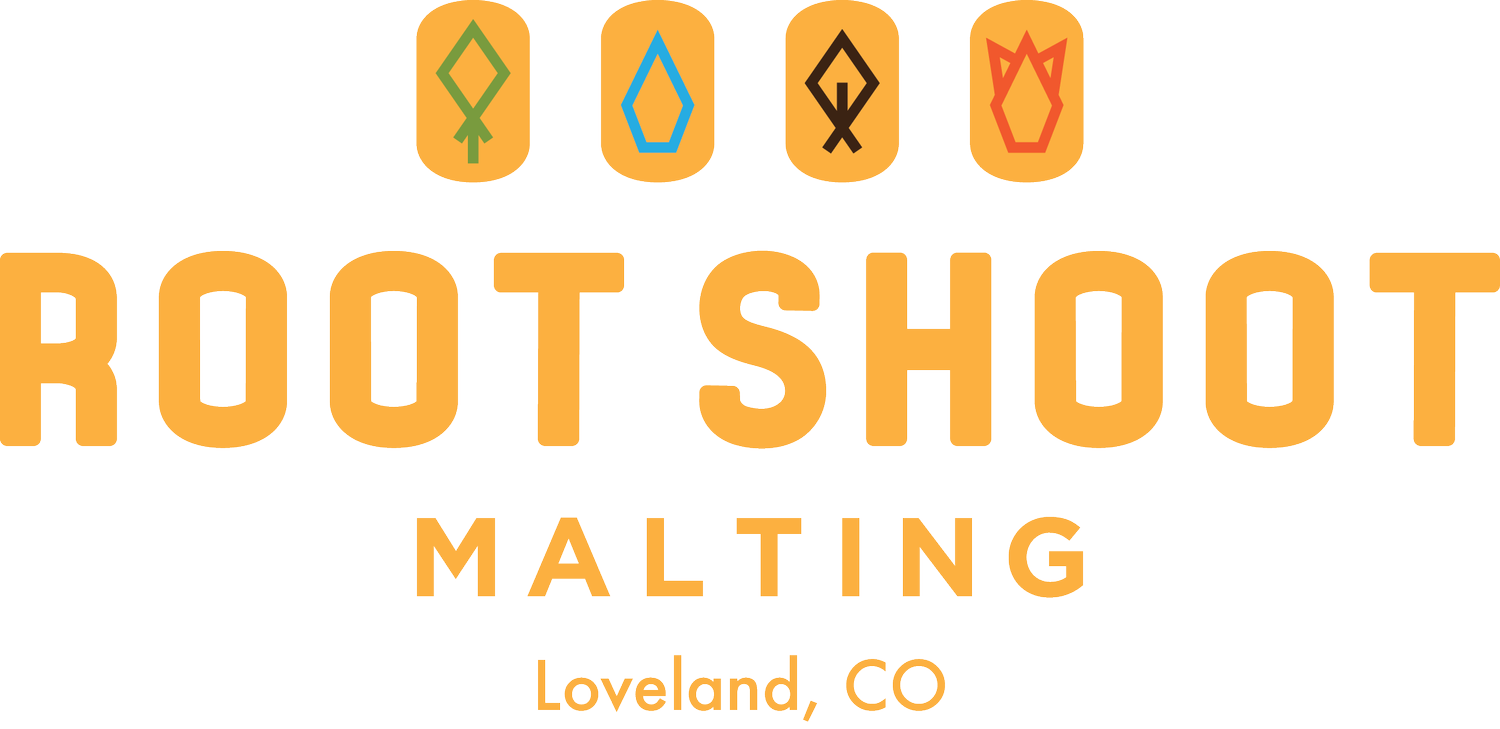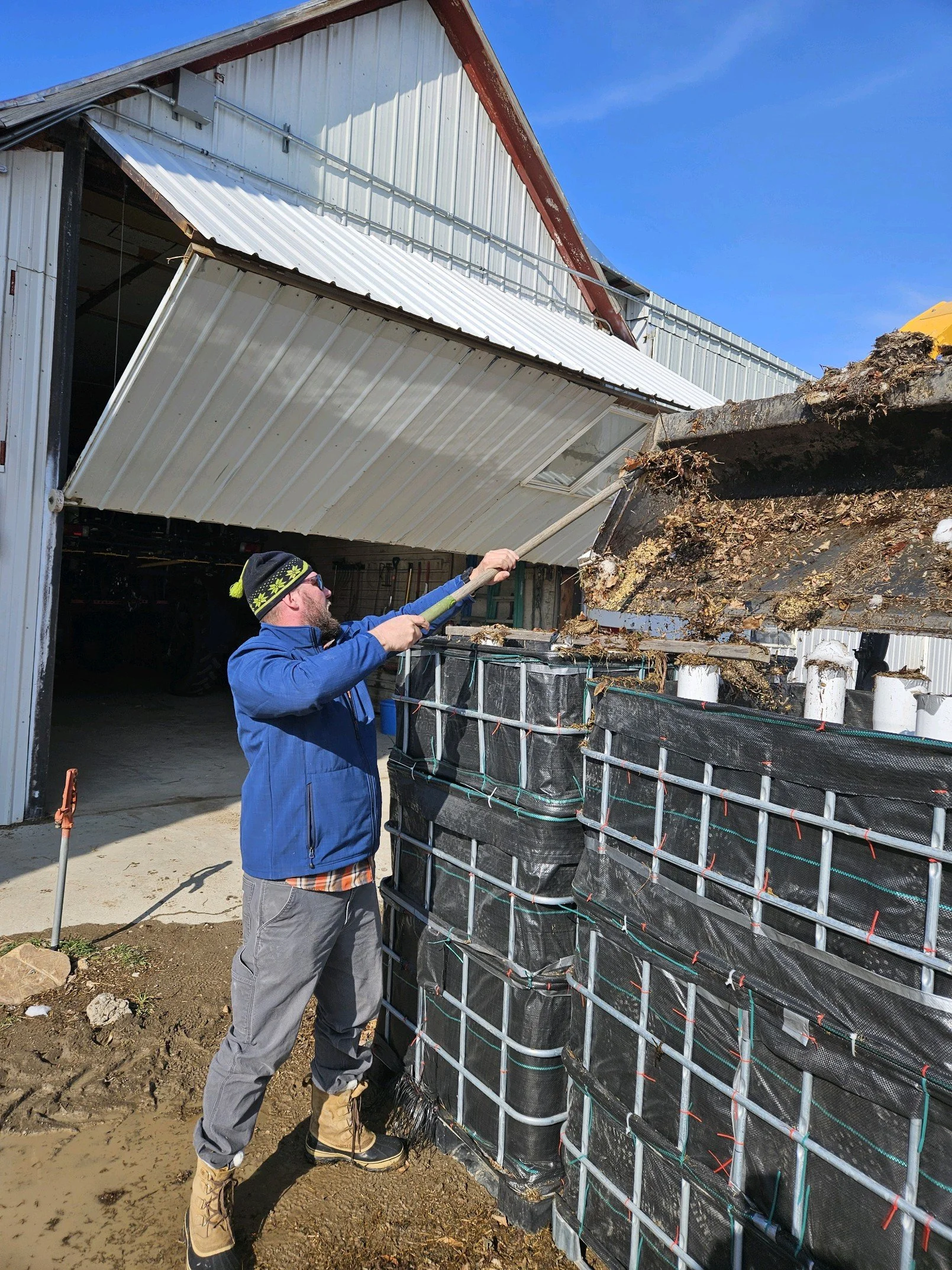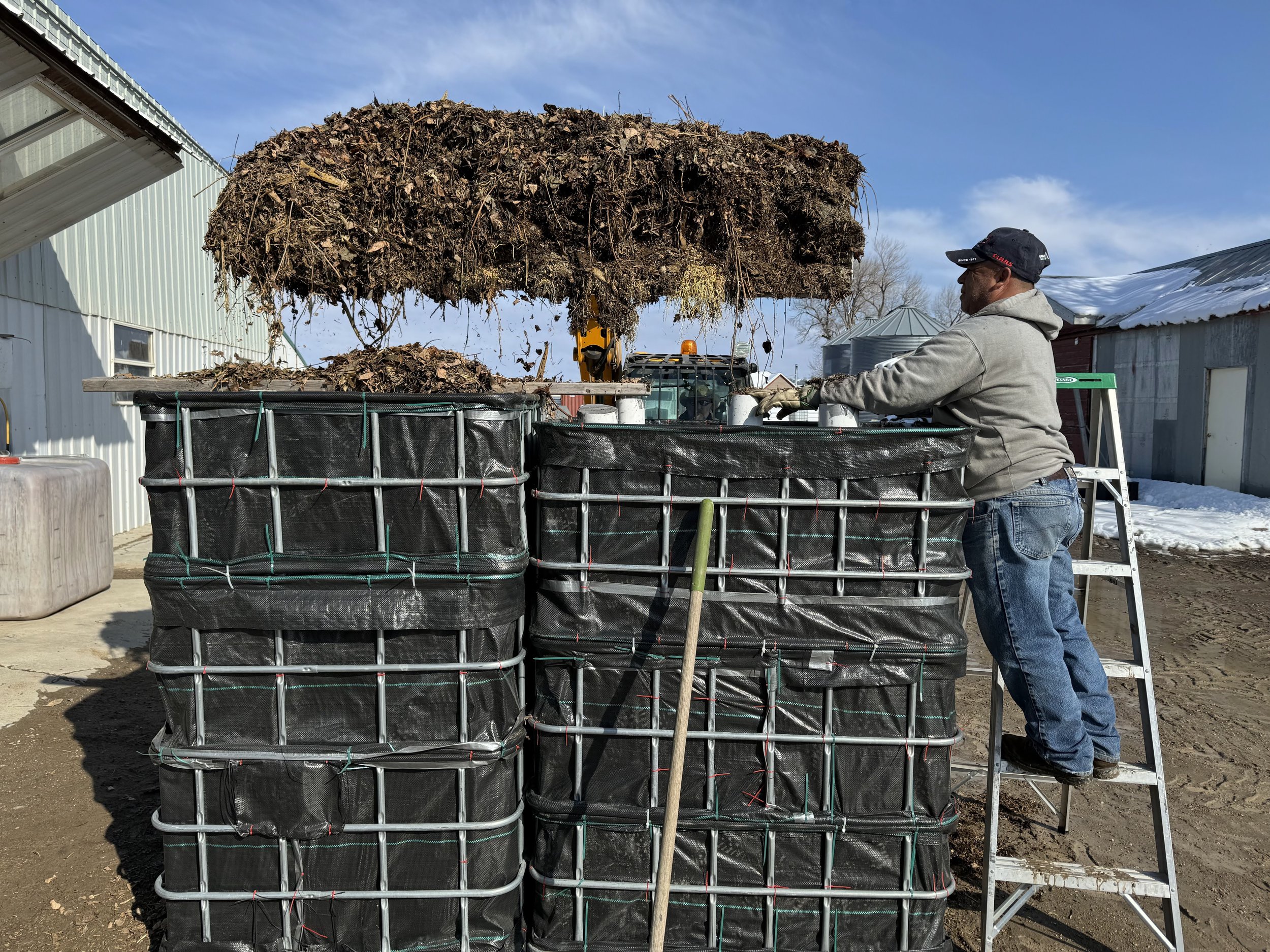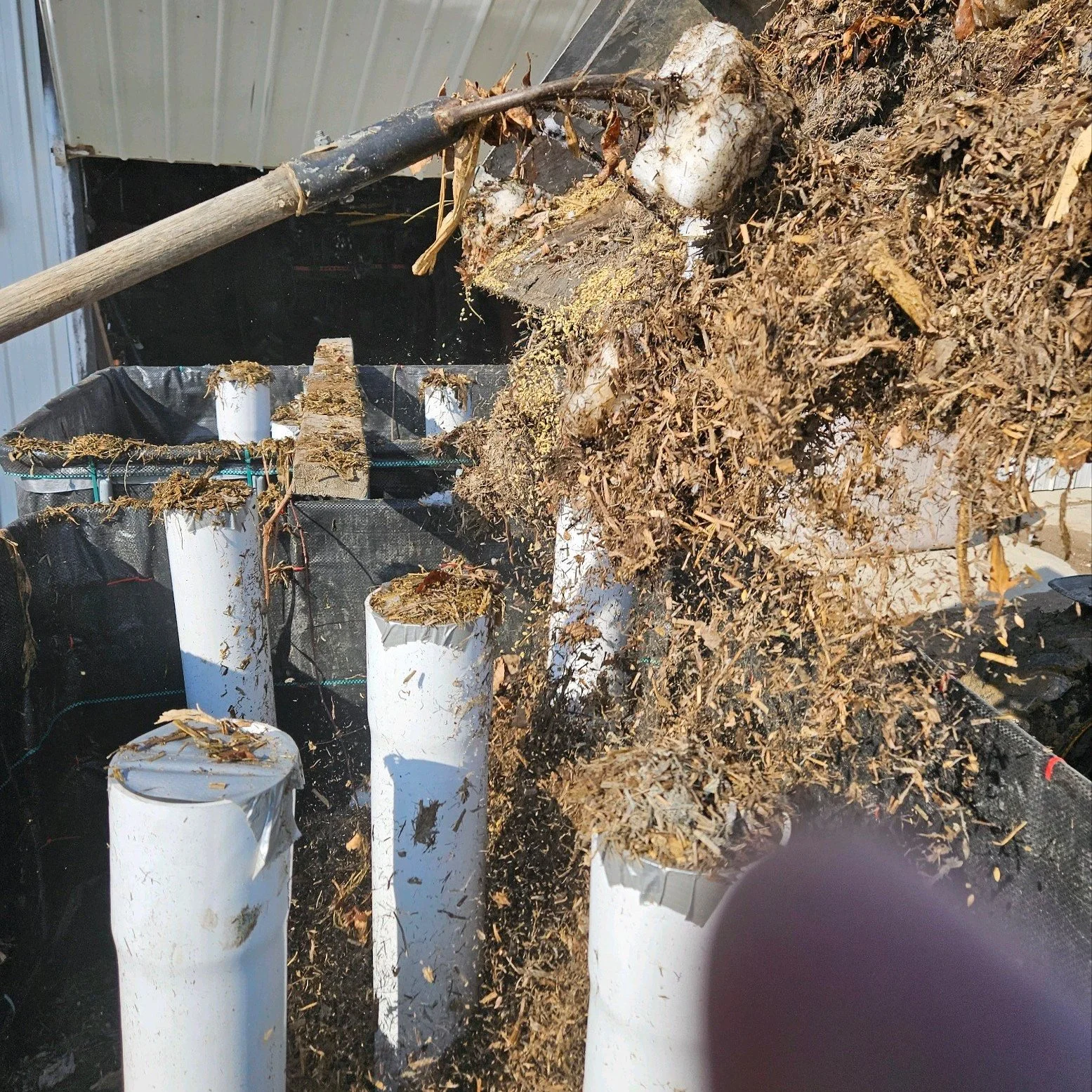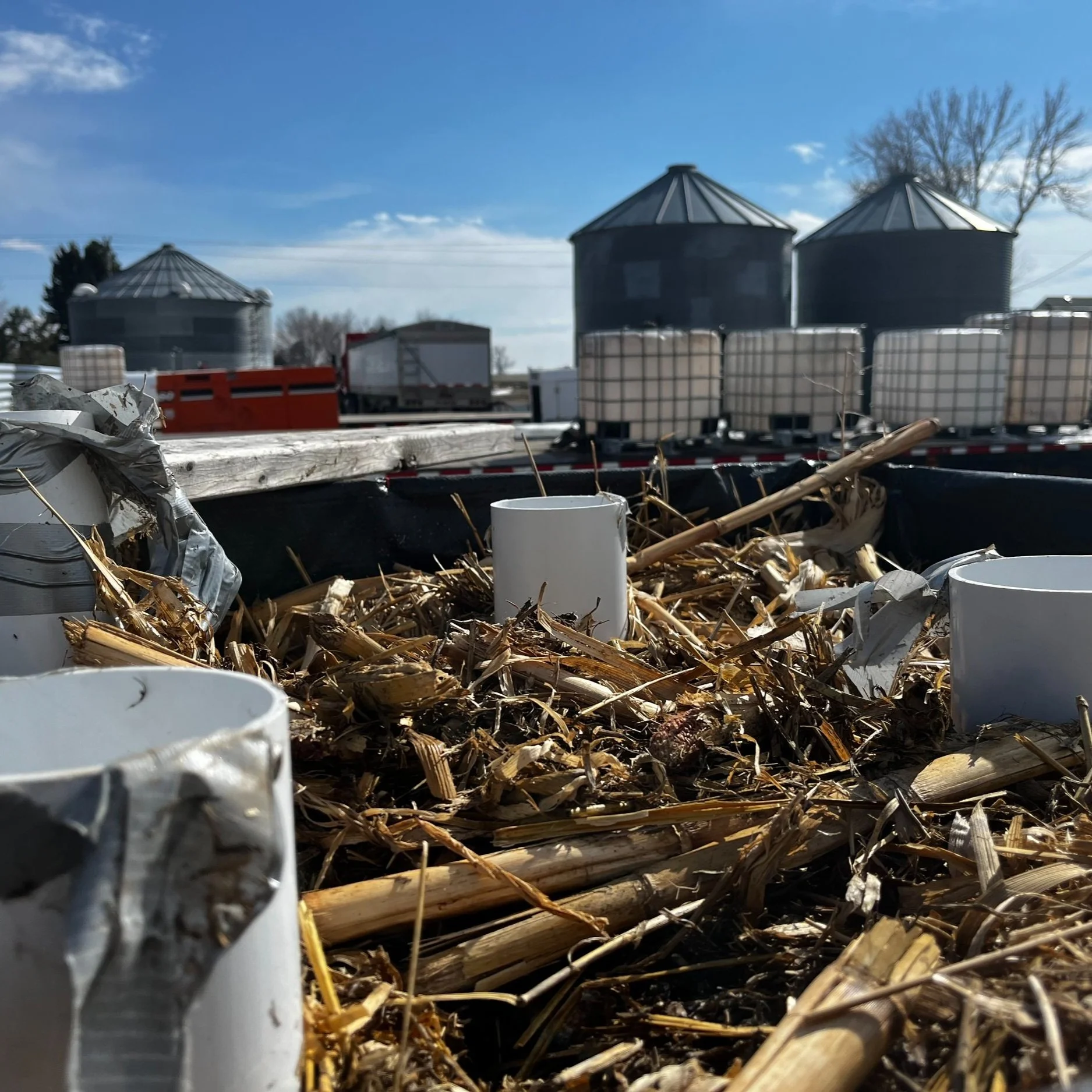Cup of worm tea, anyone?
Served up with a tasty crash course in composting, perhaps?
Yes? Oh, we’re so glad you accepted! You’ll just have to hang on a year or so.
Welcome to Farmers Todd and Steve’s latest regenerative project: a Johnson-Su bioreactor.
It sure sounds fancy, doesn’t it? Like something straight out of an Austin Powers film, right up there with “sharks with laser beams attached to their heads.” But as much as it might evoke something high-tech and sci-fi-worthy, it’s really just…a pile of organic matter and some worms. But before we dive into worms, let’s back up a minute to cows.
We’ve been doing traditional windrow composting for years at Olander Farms. It’s a system we believe in to add nitrogen to the soil and divert waste products, mostly dairy manure, into something useful. Here’s how traditional composting works: Mix carbon-rich materials (i.e. cornstalks) with nitrogen-rich materials (i.e. manure,) add sufficient moisture, and then let it process by alternating periods of allowing the piles to sit with regular intervals of turning it to mix it. Through this process, bacteria in the pile really get cranking, heating the pile up, breaking it down, and creating a nitrogen-rich end product to add our fields.
Great, right? Sure is!
But what if we could do better?
We’re giving it a shot with the bioreactor experiment.
While certainly of value, traditional composting has limitations. First off, it is a bacteria-dominant form of compost. Why does that matter?
An ideal agricultural field has soil with a 1:1 fungal-to-bacterial ratio. Currently, however, most fields - ours very much included - are bacterial dominant, which means quite simply, that the balance is off. We know, from extensive soil testing on our own fields, that our microbes aren’t where they should be for the land to be maximally healthy. We’ve got far too many bad microbial critters, and not nearly enough good ones.
Enter the bioreactor.
Developed by Dr. David Johnson of California State University and his wife, huiChen Su, a Johnson-Su bioreactor is a new(er) system of composting that creates the fungal-dominant, high-microbial product that our soils so desperately need.
An admittedly oversimplified explanation of the process looks like this: set some large, tower-like containers on top of pallets (for airflow) on the ground. Intersperse pipes running vertically throughout the bins (this will also be for airflow) then fill them to the top with damp organic matter. Let it heat up (those bacteria will do their thing, just like traditional composting) and then, when the temperature of the bioreactor drops to 80 degrees or below, pull the tubes (you’ve now created air pockets) and add…worms! Red wigglers to be specific, an excellent composting worm. After that, allow the bioreactors to sit for one full year, watering them occasionally.
What makes this relatively straightforward process different? The combination of organic matter + worms + time (with a little water and air thrown in) creates fungal-dominant compost. It’s teeming with microbes, worm castings, and all the good things that are lacking in our farm fields. After a year, when the bioreactors are taken apart and the compost extracted, it can be used to brew a “tea” that can then be sprayed on fields to give them a dose of microbiology. Or the compost can be applied directly to the fields, much like our traditional compost.
We’re going to go the tea route for our first try. We just built our initial bioreactors last month, so they’re only beginning the process of creating microbes. For this farm year, we’re working with a vermiculture company out of Ft. Collins to try and kick off the farm season with some local, homemade vermi-tea.
It’s probably about as tasty as it sounds. While we enjoy sharing, our honest advice is maybe to stick to the beer and whiskey made with our award-winning malt. Leave the tea for the barley and rye.
Cows and compost. Worms and water. Microbes, fungus, and fully planted fields.
We’re excited to be jumping into another growing season, excited to be learning new things, and, as always, excited to have you with us.
We’ll keep you posted on the compost. If all goes well, maybe we’ll invite you out to sip on a brew while brewing some poo. Worm poo that is.
Just another day of fun (and fun-gal!) in farming.
- Your Olander Farms Crew
